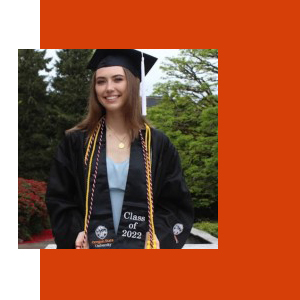Meet Michael Acosta, a graduate of Oregon State’s mechanical engineering program currently in his first year on the job.

Michael, currently a rotational engineer with Amentum at the Hanford Vit Plant in Richland, Wash. talks through where he’s been, what he’s doing now, and what he’s aiming for in the future.
Then: a passion for building led to mechanical engineering at OSU
My joy for engineering started when I was younger and often played with Legos, tools, and general crafts. Back then, going through the process of designing and building my own structures, vehicles, and contraptions gave me such joy and sense of accomplishment. I often took part in events that involved designing and constructing things like wooden bridges, water powered rockets, and small robots.

Further into my life I aimed to gain more knowledge towards engineering, and in high school I took many courses such as AP Physics, General Engineering, AP Calculus, and Machine Shop. With my interest and enjoyment of engineering ever growing, I applied to Oregon State University, was accepted, and started to build my school curriculum. In the end, I chose mechanical engineering since it branched out to multiple fields like electrical, chemical, and even nuclear engineering which gave me insight into a variety of industries I could go into.
Now: solving problems as a Rotational Engineer
A day in the life of a recently graduated engineer can vary but for me it is full of problem solving, questions, brainstorming, teamwork, and bonding.
I start my days waking up at 4:30 a.m. I get ready for work and take care of my dog Remi, and then head off to the Hanford Vit Plant. I clock in and start my days catching up to what I missed during the night and prep myself for the morning meetings.
I am a part of the Instrumentation and Controls group and in our morning meetings we meet up online and discuss our plans for the day and what systems or projects we will be working on. My projects include working on the cybersecurity system for the site, working on the camera systems that our mechanical handling team uses, and even finishing up work from my prior team, the Water & Steam group. These projects come with their own unique challenges but utilizing my coworkers’ individual skillsets and asking questions greatly increases our efficiency.
After work, I meet up with my coworkers where we bond and enjoy playing trivia and eating Thai food at a local restaurant. Afterwards, I get ready with my meal prep and prepare myself for another day full of challenges and learning opportunities.
Future: aiming for a greater impact
Future career goals and opportunities I am looking forward to as a growing young engineer: I aim to take on tasks and projects in different fields that I can learn from and expand my technical and engineering knowledge.
Additionally, I have an ambition to rise to an engineering position where I can have a greater and more positive impact on helping the environment because as an engineer, I want to help people and the world with my work.
Overall, I look forward to using these experiences to build my confidence as an engineer and being able to truly own my signature.
About Amentum & the Hanford Vit Plant
In southeastern Washington state, Bechtel National, Inc. and Amentum are designing, constructing, and commissioning the world’s largest radioactive waste treatment plant for the U.S. Department of Energy (DOE). When complete, the Hanford Tank Waste Treatment and Immobilization Plant, also known as the Vit Plant, will process and stabilize million gallons of radioactive and chemical waste currently stored at the Hanford Site.
Amentum is a corporate partner of the Career Development Center; thank you for supporting career development at Oregon State University!



















